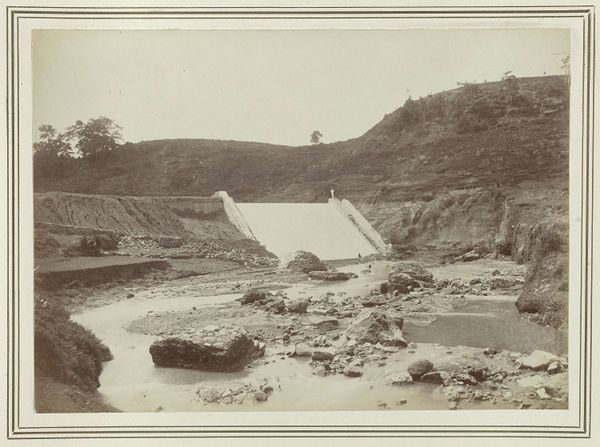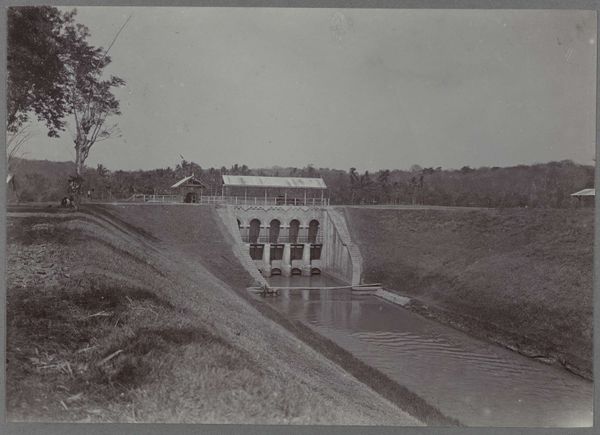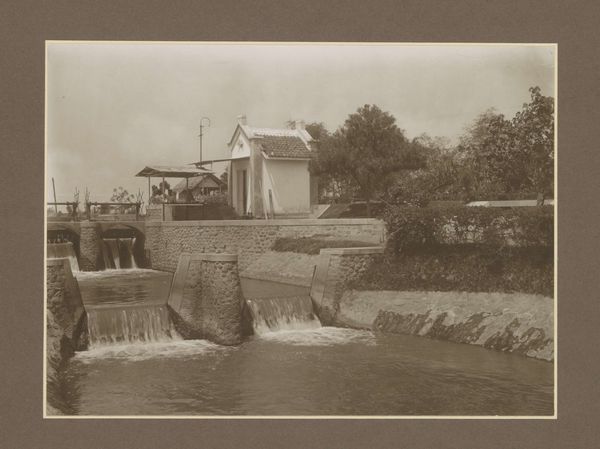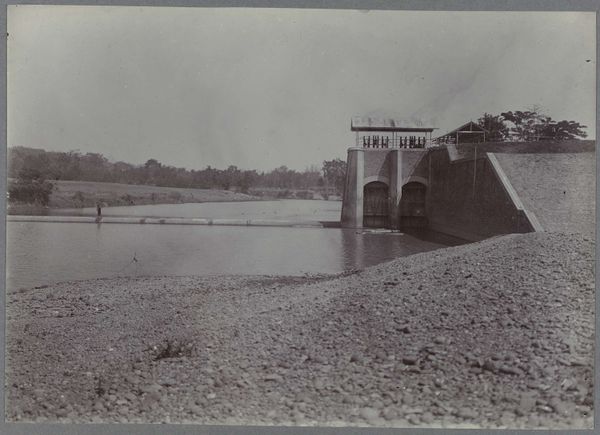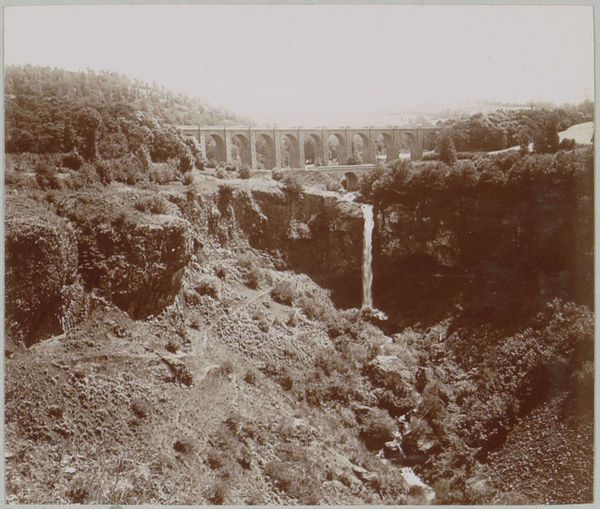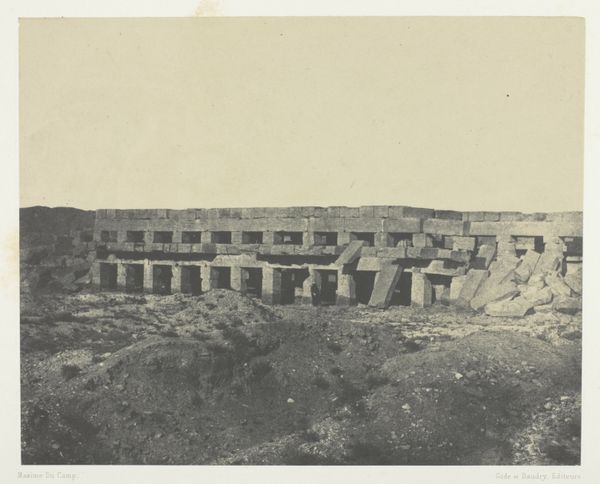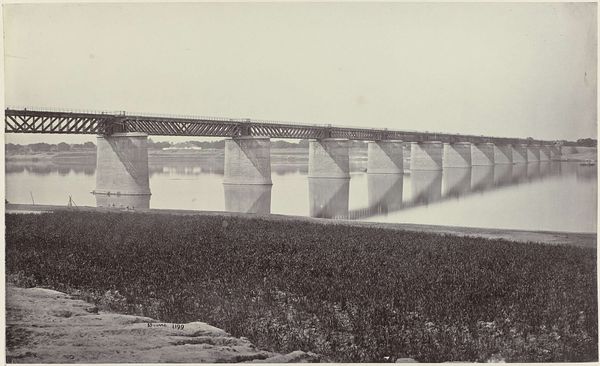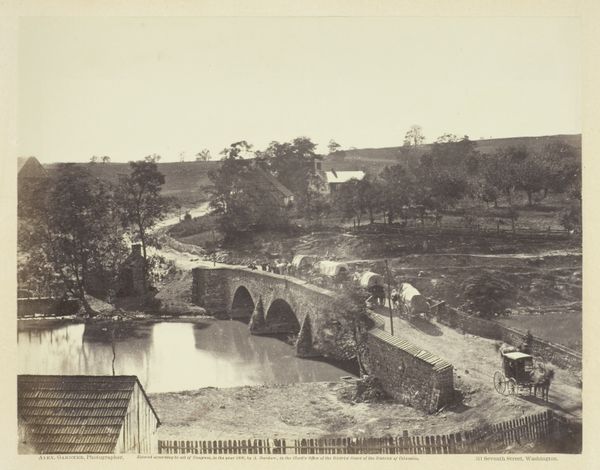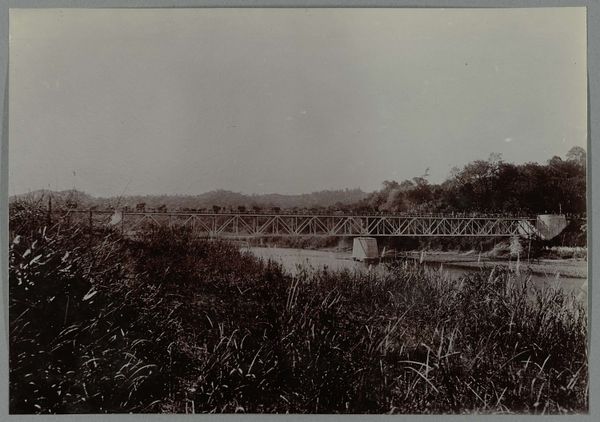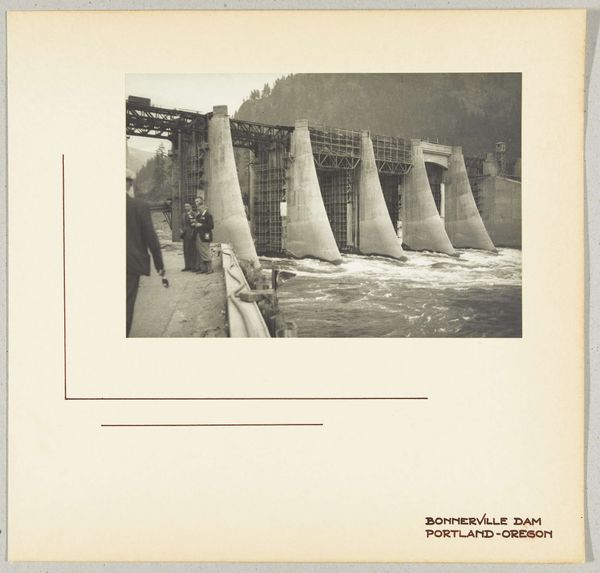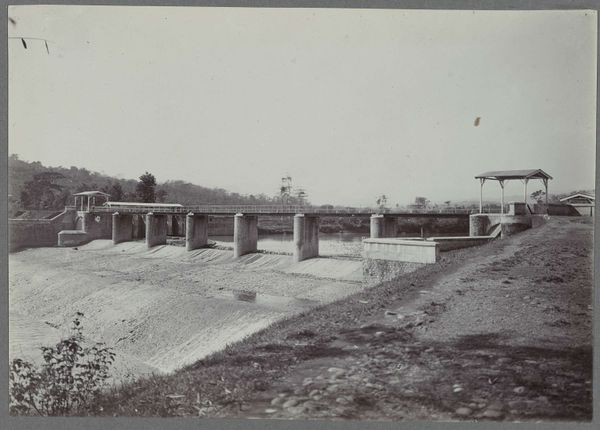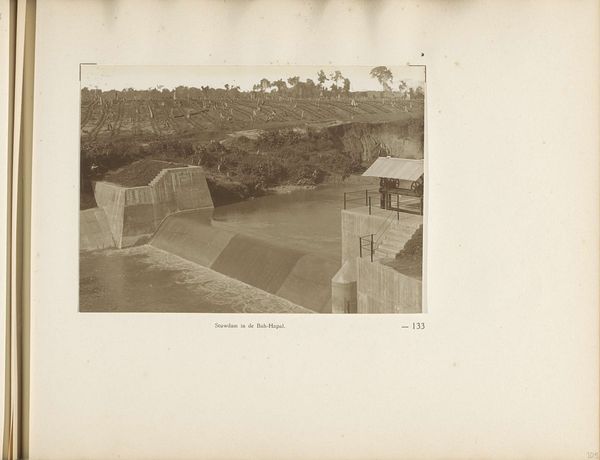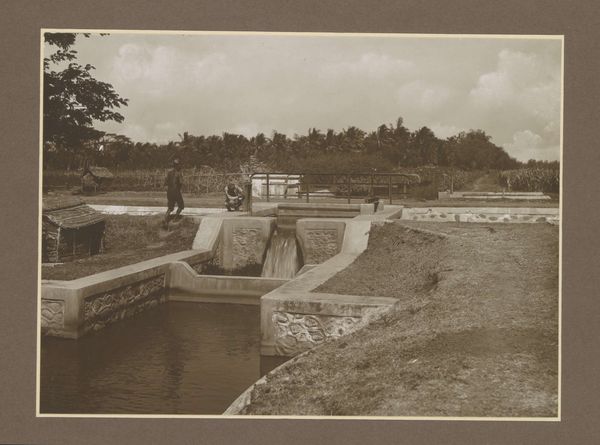
photography, albumen-print
#
natural tone
#
landscape
#
photography
#
19th century
#
naturalism
#
albumen-print
Dimensions: height 150 mm, width 210 mm
Copyright: Rijks Museum: Open Domain
Curator: What a striking image! We’re looking at "Stuwdam en waterval" by Kassian Céphas, taken in 1886. The photograph, an albumen print, captures a dam and waterfall. It now resides here at the Rijksmuseum. What’s your first take? Editor: There's a strange calm. Despite the powerful rush of water, the photograph’s composition, almost rigidly geometric, gives it a sense of stillness. The muted, natural tones reinforce this quietude. Curator: Indeed. Céphas, working in the late 19th century, was likely interested in documenting Java's changing landscape. The dam, a clear sign of Dutch colonial engineering, would have been a symbol of progress and control. Notice the figures in the distance, possibly locals, dwarfed by the structure. Editor: It's an interesting tension. The geometric rigidity of the dam contrasts with the organic, almost wild growth along its base. The eye is drawn to that central, powerful water flow but it's then directed toward the quiet, almost ghostly, figures atop the structure. Curator: Precisely. This reflects a broader dynamic during that era. Photography was increasingly used as a tool to both celebrate and, inadvertently, reveal the impact of colonial interventions on local communities and environments. The control over water and land signified control over the population. Editor: And there's something almost romantic in how the light catches the water. It’s diffused and yet, simultaneously highlights the structure’s man-made, geometrical features. The light creates texture and softens the otherwise severe lines. Curator: I agree. While presenting an image of order and technological advancement, Céphas' photograph also captures the inherent imbalance and tension of that imposed order. Editor: Looking closely, it seems both intentional and perhaps accidental at once; the artist frames nature in an entirely unnatural configuration that paradoxically, reveals nature’s own enduring power. Curator: Ultimately, Céphas offers us a layered view of a specific historical moment. One where industry, nature, and colonial ambitions converge. Editor: It prompts us to see beyond the surface representation of progress and consider its multifaceted impact. Thanks. Curator: An important point. Thank you for offering new ways of looking and thinking about this work.
Comments
No comments
Be the first to comment and join the conversation on the ultimate creative platform.
